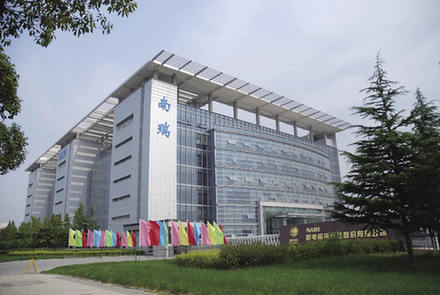Nanjing Software: The New Brilliance of an Ancient City
Nanjing Software: The New Brilliance of an Ancient City
By GAO YAN
TOGETHER with Dalian and Chengdu, the city of Nanjing is a major producer of computer software in China. People may wonder what in the world has made Nanjing, a city known for its cultural and historical heritage, a leader in China's software industry. And how did this seem to happen overnight? In spite of its relatively low profile, Nanjing has a few tricks up its sleeve the other cities don't.
Nanjing's software applications come mainly out of "Jiangsu Software Park" and "Nanjing Software Park," and a cluster of software industrial bases called Jiangning, Xuanwu, Yuhua, Gulou and Puko. The swift uptake of these revenue-generating hot spots has boosted both regional and national economies.
 |
| Nanjing Automation Research Institute (NARI). |
Weighty Past, Buoyant Future
Dr. Sun Yat-sen once predicted Nanjing's huge potential for powering China's development. Nanjing seems predestined to be at the heart of China's story, a pivot point of historical significance, past and future. The calm Yangtze River drifts serenely into the city proper as in ancient times, a unique feature of Nanjing. At daybreak, reminders of modernity rise in the form of motor vehicles and numerous bicycles jettisoned onto the roadways and buzzed in and out of the city gates. Many are headed to work for the electronic, information, chemical and automotive operation that have made Nanjing a major production base in those industries.
While the term "heavy industry" is used to describe most of Nanjing's economic juggernauts, the word "software" is slipping off the tongues of more and more local people. The vigorous software industry is backed up by a great number of universities and research institutes in Nanjing.
Nanjing is, justifiably, still famous for its historical remains. Its huge city wall, over 600 years old and wide enough for two horse-drawn carts to run shoulder to shoulder on its top, still stands proudly. After the introduction of the reform and opening-up policy, new things like subways, viaducts and tunnels have appeared, one after another, to usher the old city into a new era. In 2008, Nanjing ranked fourth in the Forbes Top 100 Best Commercial Cities in China's Mainland, and seventh in terms of overall strength in the State Statistics Bureau ratings. In terms of sustainable development standards compliance, it ranks second among all cities in the Yangtze River Delta. Nanjing is also the laureate of the UN's Habitat Scroll of Honor Award of 2008, making it second only to Shanghai.
Politics are less important to Nanjing now, but it once housed the central government of the Republic of China, led by Dr. Sun Yat-sen, its provisional president. He was sentimental whenever the city was mentioned; to him it seemed a place of unlimited potential. A hundred years on, the dream of a powerful China is materializing. People's visions now have a scope far beyond this city, the Yangtze River and even the country – to the whole world, to the future.
Services
Economy
- Eco-agriculture and Eco-tourism Power Nanchang’s Green Development
- Balance Environmental Protection and Economic Prosperity – Nanchang Looks to European Technology for Green Development
- Sustainable Growth Requires Wiser Energy Use
- Chinese Economy: On the Path of Scientific Development
- China's Economy over the Last Ten Years

